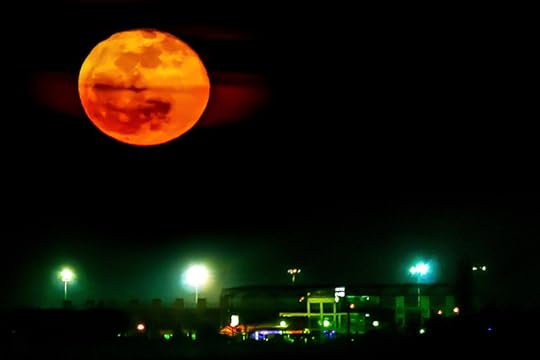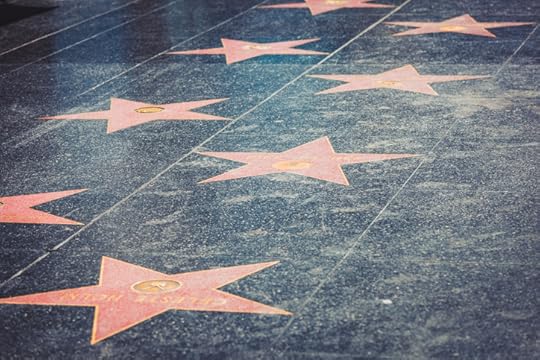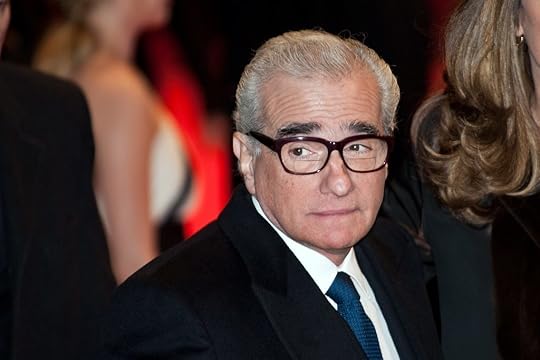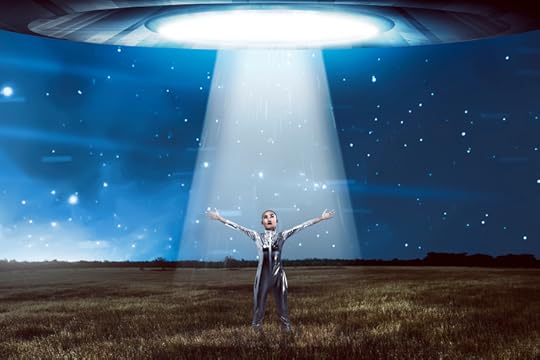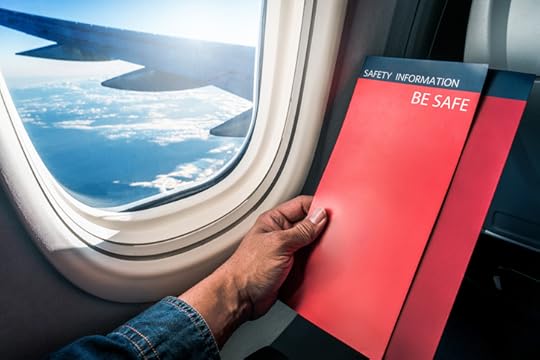Bathroom Readers' Institute's Blog, page 33
October 24, 2018
Take Me Out to the (Haunted) Ballgame

Sports stadiums in the U.S. are historic buildings, with some dating back to the early 20th century or beyond. And you know what they say, the older a building gets, the more likely it is that ghosts are hanging out there. Here are some spooky sports stories.
George Gipp
The University of Notre Dame was a football powerhouse in the early 20th century, and its legend only grew with the classic 1940 film, Knute Rockne, All American. Named after a Notre Dame coach, it’s most famous for Ronald Reagan’s role as George “The Gipper” Gipp, the school’s first All-American, and still one of its biggest stars. In November 1920, he stayed on the field hours after the last game of the season, giving others punting lessons. It was so cold that he contracted both pneumonia and strep throat, and he died from his illness that December. (In the movie, a dying Gipp implores his teammates to “win one for the Gipper.”) After he died, doors on campus opened and closed without cause, and an identified French horn played throughout the night. Give years later, students claimed to have seen the ghostly specter of George Gipp riding a horse.
Jimmy Hoffa
It’s a long-standing urban legend that the late, disappeared Teamsters boss Jimmy Hoffa was buried in the end zone at Giants Stadium. (In fact, before the venue was demolished, Mythbusters looked for the body and couldn’t find it.) But Hoffa wasn’t even a Giants fan—he was a diehard Detroit Lions supporter. Apparently, his distinctive voice has been heard all over the Lions’ Ford Field during games.
Owen Hart
Professional wrestling is largely staged, but tragic accidents can happen. In 1999, Owen Hart was being lowered by wires into the ring at a match in Kemper Arena in Kansas City. But the equipment malfunctioned, and Hart careened to the hard floor, and he died from his injuries. Poor Hart apparently still can’t leave Kemper Arena. Employees say they’ve spotted a costumed wrestler walking around the venue’s rafters who bears an uncanny resemblance to Hart.
Herbert Chapman
Arsenal is one of the more historically successful soccer teams in the U.K.’s Premier League, with 13 championships to date. Those all came after Herbert Chapman took over as team manager in 1925, and built the team up to the British soccer equivalent of the New York Yankees. But then he unexpectedly died in 1934 at the age of 35. The cause of death: pneumonia, likely due to his insistence on attending three outdoor games during a single week in January. His cold got worse, and he died. At Arsenel’s old stadium, Highbury, numerous people reported hearing steps walking through the tunnels, believed to be the restless ghost of Hebert Chapman.
The post Take Me Out to the (Haunted) Ballgame appeared first on Trivia Books and Facts | Uncle John's Bathroom Reader.
October 23, 2018
The Minecraft Story

Do you play the video game Minecraft? If you don’t, your kids or somebody close to you probably does. Not since Pac-Man has a single video game been this popular. Here’s a look into the origins and impact of this cultural behemoth. (This article was first published in our 31st annual edition, Uncle John’s Actual and Factual Bathroom Reader.)
PRESS ANY KEY TO START
Markus Persson was born in Sweden in 1979. As a child, he exhibited a natural talent with computers, and he was fortunate to grow up in a time when they were starting to become both accessible and affordable. Using a computer language called BASIC and his family’s Commodore 128, he started learning computer coding at the age of seven…and was making games to play with his friends by age eight.
He stuck with it as he grew up, and when it came time to start planning for life post-graduation, Markus told his high school guidance counselor that he wanted to design video games for a living. The counselor told Markus that his dream was just that—a dream, and it was never going to happen.
Undaunted, Markus kept making small, simple games for himself, while he worked as a programmer for various companies in Sweden, including King, a software developer that made web-based games, and Jalbum, which makes digital photo sharing software.
READY PLAYER ONE
But Persson soon grew bored with his programming job, and started to spend all of his free time building his most complex game to date. He decided to call it Cave Game, and it would be a game of simple graphics (resembling Nintendo games from the 1980s) that centered on a player going on a mystical quest, exploring caves, and fighting off mythical beasts.
But then he changed his mind. He decided to lose the plot and have the game be an open world full of endless possibilities with no clear objective. And he changed the name to Minecraft.
The “mine” part: players could dig in the ground (and seas, and underground, and other “biomes”) to look for wood, iron, gold, emeralds, and other materials. With those, they could build simple structures or fantastic towers…they just had to look out for the skeletons, zombies, and other bad guys hanging around. The worst villain of all: the Creeper, a green monster that would approach players’ hard-built structures…and blow them up.
GAME ON
In 2009 Persson (who started going by the name “Notch,” a nickname he used in online video game forums) released the original, not-quite-polished “alpha” version of Minecraft online. Length of time it took him to design it: six days.
While a lot of video games receive a huge, multimedia push, this wasn’t that kind of game. The only reason anyone knew it existed was because Notch wrote on the video game forum TIGSource that he’d released a game called Minecraft on his website (Minecraft.net—it’s still live). “It’s an alpha version,” he added, “so it might crash sometimes.”
Notch’s plan: Sell the game to a small video game company for enough money so that he could quit his job and then design another game. Then he’d sell that one, and repeat the process. That’s not exactly what happened.
EXTRA LIVES
Most of the most popular video games in history—Pac-Man, Super Mario Bros., The Sims—were developed by huge software companies, and designed, programmed, and marketed by armies of employees. Remarkably, Minecraft was a one-man operation. Notch designed, programmed, and released the game literally by himself. That also meant he got every last penny from its sale.
From that single post on TIGSource, the popularity of Minecraft grew—its appeal was in its simplicity and open-ended format. By the summer of 2010, tens of thousands of people around the world had downloaded Minecraft. The way they paid for the game was as humble as the game itself: they sent Notch a few bucks via PayPal.
When Notch’s personal PayPal account reached over $760,000, the service locked his account—they thought he was doing something suspicious, maybe even illegal.
Having made almost a million dollars, Notch decided to quit his job at Jalbum to devote himself to Minecraft full-time. He resigned on his 31st birthday.
LEVEL UP
Part of devoting himself to Minecraft meant expanding the operation to keep up with demand. To continue adding elements to the game and issuing updates to its growing army of players (something that was impossible for the manufactured disc or cartridge segment of home video games), Notch had to delegate the business side of things to other people. He formed a company called Mojang (the Swedish version of “whatchamacallit”) and hired six people to help with programming and processing payments.
As Minecraft grew, so did attention from beyond just the people who were playing it. And a lot of people were playing it—by the end of 2010, it had sold 500,000 copies, and “Minecraft” was YouTube’s top search of 2014, and Google’s #2 search.
Notch started getting offers. The video game publisher Valve wanted to buy Minecraft or hire Notch and other Mojang staffers, but Notch resisted. Nevertheless, in 2011 he announced that he’d be leaving the company and his game. Reason: He’d created and shared his game, and said he was ready to move on to something else.
A few months after Notch announced his departure, Microsoft bought Mojang and Minecraft. Price tag: $2.5 billion. Bill Gates’s software giant beat offers from video game companies like Valve, Electronic Arts, and Activision, as well as a $1 billion offer from an anonymous tech giant, rumored to be Google.
MINECRAFT BY THE NUMBERS
Despite being less than a decade old, Minecraft is already the second-best-selling video game of all time. More than 120 million copies have been sold worldwide. (It trails only Tetris.)
Minecraft is the most-played online game. Fifty-five million people hop on the internet to play it each month. That’s quadruple the number of people that play the second-most-popular online game, World of Warcraft.
Markus Persson now lives in the United States full-time, in an expensive estate in Beverly Hills. How expensive? He paid $70 million for it—making it the priciest home in the pricey L.A. suburb. (He outbid Jay-Z and Beyoncé for it.)
Minecraft remains the best-selling independently produced game of all time. That means it wasn’t published by a huge video game company, the way nearly every other video game is.
Minecraft is also the fourth-most-lucrative thing to ever come out of Sweden, trailing only Volvo, IKEA, and the band ABBA.
Did Microsoft get its money’s worth? In the year before the corporate giant bought the rights to Minecraft, the game generated $81 million. In the year after the Microsoft purchase, it made $237.7 million.
The post The Minecraft Story appeared first on Trivia Books and Facts | Uncle John's Bathroom Reader.
October 19, 2018
Mmm…Cameos
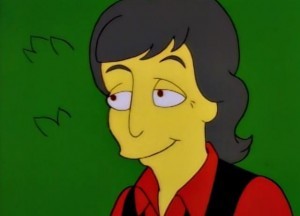
The Simpsons just started its unprecedented thirtieth season on the air. This one is sure to include some special celebrity guest stars…which is old hat for the series. Here are some stories behind some Simpsons cameos.
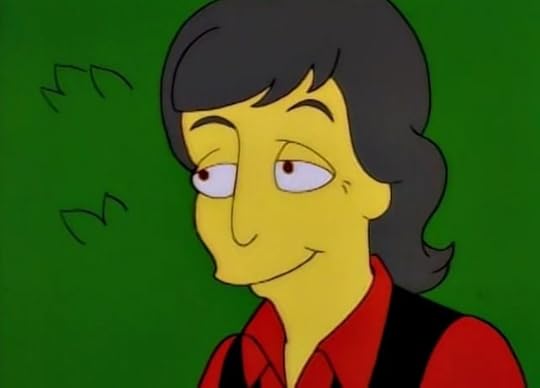
Leonard Nimoy
One of the most famous episodes of The Simpsons is the 1993 installment “Marge Vs. the Monorail.” When Springfield receives a huge windfall, the town votes (against Marge Simpson’s warnings) to use it to install a monorail. It all goes horribly wrong of course, but at the least the celebrity on the maiden voyage is cool: Star Trek legend Leonard Nimoy. Writers crafted the script with Nimoy in mind, but assumed he wouldn’t want to do the show. Instead, producers pursued another Star Trek cast member: George Takei. He accepted, but had to back out when he remembered that he was a board member of the Southern California Rapid Transit District and didn’t want to publicly badmouth monorails. So, producers asked Nimoy…and he said yes.
Michael Jackson
The Simpsons was a white-hot cultural phenomenon in its first season, attracting even celebrity fans. The biggest musical star in the world in 1991, Michael Jackson, was such a fan of the show that he called up producers and asked if he could be the show. Staff happily obliged, and writers cooked up “Stark Raving Dad.” Homer Simpson lands in a mental institution (because he wears a pink shirt to work) and meets an overweight, Caucasian man named Leon, who believes himself to be Michael Jackson. He goes home with Homer, and helps Bart write a song celebrating Lisa’s birthday. In the credits, the role of Jackson is credited to “John Jay Smith,” but Leon really sounded like the King of Pop. Jackson did provide the speaking voice for Leon, but the singing was done (for contractual reasons) by an imitator named Kipp Lennon.
Paul and Linda McCartney
In the 1995 episode “Lisa the Vegetarian,” Lisa Simpson becomes, well, a vegetarian. She’s persuaded in her decision by a meeting with probably the two most famous non-meat-eaters in the world: Paul McCartney and Linda McCartney. (They explain that if their song “Maybe I’m Amazed” is played backwards, it reveals a recipe for lentil soup.) The McCartneys only agreed to guest star on the show if Lisa stayed a vegetarian for the duration of the show. After 23 years, The Simpsons is still on the air, and Lisa remains a vegetarian.
Do Not Play Ball
The 1992 episode “Homer at the Bat” finds Homer sitting on the bench at company softball games when Springfield Nuclear Power Plant owner Montgomery Burns fills out the team’s roster with Major League Baseball ringers: all of them all-stars, future Hall of Famers, and/or World Series champions: Wade Boggs, Ken Griffey Jr., Roger Clemens, Steve Sax, Ozzie Smith, Jose Canseco, Mike Scioscia, Don Mattingly, and Darryl Strawberry. All played themselves, because who wouldn’t want to appear on The Simpsons? A number of big leaguers, actually — Nolan Ryan, Ryne Sandberg, Carlton Fisk, and Rickey Henderson turned down the offer.
The post Mmm…Cameos appeared first on Trivia Books and Facts | Uncle John's Bathroom Reader.
October 15, 2018
The ABCs OF RPS

Put that competitive instinct and that deep-seated pathological need to win to the test: Here are some ways to increase the likelihood you’ll win at that classic battle of weapons and wits: Rock, Paper, Scissors. (This article was first published in our 31st annual edition, Uncle John’s Actual and Factual Bathroom Reader.)
THE MIND-CONTROL METHOD
Most people are just casual Rock, Paper, Scissors players. If you’re going to take the game seriously, then you’ve already got an advantage over a relative novice…and you can exploit their newness, because it’s a weakness. If your adversary is a newbie, explain the game; if they’re a casual RPS’er, give a refresher course. As you do, use hand gestures to demonstrate your point. For example, when you mention that rock defeats scissors, make the scissors sign with your hand. Then, explain that scissors beats paper. Once again, make the scissors sign. That back-to-back repetition of scissors will stick in your opponent’s head, and they’re much more likely to throw a scissors the first time you play for real. Expecting that, throw rock. You win.
KNOW YOUR STATISTICS
According to the experts, “rock” is the most commonly thrown first move. Knowing that, you should throw paper. If the odds are in your favor, your paper covers their rock. You win. Rock is an even more common initial move among men, while casual female players statistically choose scissors on their first go-around. If you’re playing against a novice lady competitor, throw rock. You win.
WATCH FOR PATTERNS
Many players will try to get into your head by throwing down the same thing two times in a row—two rocks, two papers, or two scissors. However, studies show that the likelihood of a player going for the same play three times in a row are slim. That means you can mentally eliminate the thing they did twice from the possibilities of what they’ll throw on round three. For example, if they did scissors, and then scissors again, they’re probably going to go for paper or rock at that point, so throw accordingly (scissors or paper, respectively). You win. (Or tie.)
THE HUBRIS FACTOR
Experienced players, such as anyone who’s read this cheat sheet, are unlikely to throw a rock first—they’re too prideful. Only rookies go for a rock on the first time. So that’s one of three possibilities that can be eliminated already. But pride factors in once more. Because the experienced player is so confident in their abilities, they’ll assume everyone else is a newbie, which means they assume you’re going to throw rock. That means they will throw a victorious paper…except you knew that, so you go for scissors. You win.
DISARM THEM WITH A LIE
Here’s a trick that will bewilder your opponent regardless of their skill level: Tell them what you’re going to throw before you throw it. And then do something else? Nope—stick to your word. They’ll think that you’re messing with them, which you are, but not the way they assume. They’ll think that by announcing “rock,” for example, it means you’re going to play something else. Predicting you’ll give them scissors or paper, they’ll throw rock or scissors to win. But then when you actually do throw rock, you either beat their scissors or tie with their rock.
LET THEM “TELL” YOU
Just like most poker players have a “tell” when they’ve got a good hand, Rock, Paper, Scissors players may demonstrate some kind of physical indication that can be used to predict what they’re going to throw. It’s all about the way they hold their hand. Does it look like they’re holding their hand in a loose fist? That’s a hint they’re looking to make their hand go flat fast for paper. Do they have their thumb resting on top of their fist? That looks like a rock. A hand with the first two fingers held loosely is an almost surefire tell that the opponent will pick scissors.
GET THEM ANGRY
If you use all of these tricks and just keep beating your opponent no matter what they throw, they’re likely to get frustrated. And when they throw their next hand, they’re likely to throw rock—it’s subconsciously and psychologically the most aggressive option. But then, you knew they were going to do that, and you’ve got paper ready. You win.
The post The ABCs OF RPS appeared first on Trivia Books and Facts | Uncle John's Bathroom Reader.
A Star Isn’t Born
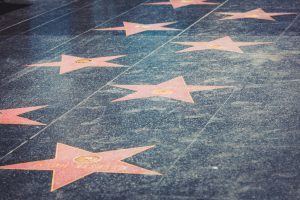
Right now, Lady Gaga is dazzling audiences with her first major role in a movie, a remake of A Star is Born, directed by co-star Bradley Cooper. It’s an auspicious first stab at film stardom, unlike these other attempts by pop stars who tried their hand at acting.
Sgt. Pepper’s Lonely Hearts Club Band
A film that combined the songs of the greatest band of all time, with the plot line of that band’s most important album, and starring four of the biggest musicians of its era somehow became an unmitigated disaster. In 1978, Sgt. Pepper’s Lonely Hearts Club Band hit theaters, starring the Bee Gees and Peter Frampton as the titular, fictional band from the Beatles’ landmark 1967 concept album. The soundtrack was loaded with those guys, and others covering Beatles tunes; Aerosmith scored a hit with its version of “Come Together” and Steve Martin’s “Maxwell’s Silver Hammer” is something to behold. However, the movie was a confusing, convoluted, psychedelic mess. (The Chicago Reader called it “indescribably awful.”) It bombed at the box office, and the careers of both Frampton and the Bee Gees never quite recovered.
Crossroads
Britney Spears was all over the radio and MTV in the late ‘90s and early 2000s, so it was only a matter of time before the “pop princess” made a movie. In 2002, she headlined Crossroads, a movie about three high school friends (Spears, Taryn Manning of Orange is the New Black, and Zoe Saldana of Guardians of the Galaxy) going on a road trip to discover themselves. There’s lots of soapy drama along the way, and it generated a hit for Spears with its spelling-everything-out theme song “I’m Not a Girl (Not Yet a Woman).” Spears won a Razzie Award for “Worst Actress” and never starred in a movie again. (Fun fact: Crossroads was written by Grey’s Anatomy and Scandal creator Shonda Rhimes.)
The Jazz Singer
Neil Diamond had a ton of hits, and put on a great show, earning him lots of comparisons to Elvis Presley. One difference between the King and the “Cracklin’ Rosie” singer-songwriter: Elvis starred in a bunch of successful movies. In 1980, after nearly two decades of fame, Diamond agreed to star in a movie: a remake of the 1927 Al Jolson hit The Jazz Singer. Diamond, 39, played a, twenty-something, cantor in a synagogue who leaves his whole life behind for a chance to be a rock star. Diamond won the Razzie Award for Worst Actor, and the only acting he ever did after The Jazz Singer were cameos as himself.
Kiss Meets the Phantom of the Park
Kids don’t much like clowns anymore, but in the mid-1970s they sure loved Kiss, the highly theatrical hard rock band whose members dressed in frightening, clownish makeup and gave themselves comic book-esque personas like “Starchild,” “Space Ace,” “Cat-Man,” and “Demon.” That should’ve lent itself very well to a 90-minute movie…but instead the group starred in a made-for-TV project in 1978 called Kiss Meets the Phantom of the Park. The premise: Kiss are superheroes, and they must use their special powers to prevent a mad scientist from blowing up an amusement park. The members of Kiss hated it so much that for years, crew members and record company staff were reportedly not allowed to mention the movie in their presence. (They also made sure that it’s been hard to find on DVD or VHS.)
The post A Star Isn’t Born appeared first on Trivia Books and Facts | Uncle John's Bathroom Reader.
October 12, 2018
Famous Names You’re Probably Famously Mispronouncing
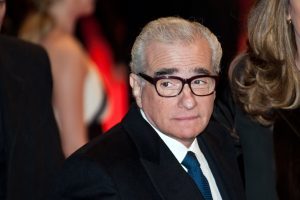
In which Uncle John corrects widespread grammatical and language abominations. Here are a few celebrity names that you may be pronouncing wrong.
Martin Scorsese
You can use a pneumonic device with this one to remember that the director’s last name is not pronounced “score-says-he.” When it comes to award nominations, Martin “scores easy.”
Demi Lovato and Demi Moore
The pop star and movie star, respectively, have the same name—Demi is short for Demitria. However, they pronounce it differently. Lovato prefers “DEM-ee,” while Moore goes with “duh-MEE.”
Rihanna
She’s one of the biggest pop stars in the world, and yet even her collaborators can’t pronounce her name correctly. (Maybe that’s why she sometimes goes by “Ri-Ri.”) In her #1 hit, “Umbrella,” Jay-Z raps a verse and says, “Rihanna where you at,” saying it “ree-AW-nuh.” It’s actually “ree-ANN-uh.”
Henry Cavill
You wouldn’t want to mispronounce the name of Superman, would you? Most media outlets call him Henry “CAY-vill,” but that’s wrong—it’s actually “CAH-vill.”
Gal Gadot
You wouldn’t want to mispronounce the name of Wonder Woman, would you? Her name is widely mispronounced, usually as “guh-DOTE” or “guh-DOE.” The right way: “gad-DOTT.”
Ralph Fiennes
Maybe he won the role of Lord Voldemort in the Harry Potter movies because he could relate to having a consistently mispronounced name. “Rafe Fines”—not “Ralph Finn-ess” played Voldemort, which is supposed to be said with a dropped T, as in “Voldemore.”
Charlize Theron
Should you ever need to address the Oscar-winning action star, sound out her name as “shar-LEEZ THAIR-enn.”
Nikola Tesla
The legendary scientist is the namesake for Elon Musk’s Tesla car company. Both man and business are pronounced with a “z” sound, not an “s” sound—so “TEZ-luh,” and not “TESS-luh.”
Saoirse Ronan
The star of Lady Bird has a traditional Irish last name that’s very common on the Emerald Isle. But it’s a little obscure everywhere else. It’s not “say-oh-irz” or something like that”—it’s pronounced “sur-sha.” When Ronan hosted Saturday Night Live, she sang a little song about how to say her name correctly.
The post appeared first on Trivia Books and Facts | Uncle John's Bathroom Reader.
October 10, 2018
When Celebrities Met Aliens

Well, according to those celebrities, that is.
Sammy Hagar
In his 2001 memoir Red: My Uncensored Life in Rock, Van Halen singer and solo star Sammy Hagar (“I Can’t Drive 55”) recounted an encounter with what he believes to be extraterrestrials. While lying in bed as a kid, he looked out the window outside his home near Fontana, California, and “saw a ship and two creatures inside of this ship.” He remembers that he couldn’t make out their faces, but had the deep understanding that the creatures sat in a ship above some foothills about 12 miles away and “they were connected to me, tapped into my mind through some kind of mysterious wireless connection.”
While doing press for Red, Hagar told reporters about another alien encounter, one he didn’t include in the book. At the age of four, Hagar says, he was living in a rural area of California when he saw what he thought at first was “a car with no wheels.” Then he saw it float across a field, generating a small dust storm before it disappeared. Or rather, that’s what probably happened, because Hagar says he “blacked out” after he saw the strange vehicle.
Fran Drescher
Drescher is best known for her work as Fran Fine, sassy Queens-born-and-raised nanny on the sitcom The Nanny. She also firmly believes that she was experimented on by aliens, and that her husband was, as well. She’s now divorced from Peter Marc Jacobson, but she once told a reporter that they both have small, nearly identical scars on their hands. That, Drescher said, is “where the chip is.” Jacobson thinks a scar is a scar, from some unremembered hot liquid spill or a sharp object, but Drescher says “that’s what the aliens programmed us to think.”
Mick Jagger
While on a camping trip in 1968, legendary Rolling Stones frontman Mick Jagger claims to have seen a massive, cigar-shaped aircraft appear in the sky above the woods. Rather than completely creep him out, he reportedly got really interested in UFOs, going so far as to have a “UFO detector” (whatever that is) installed at his home.
Shirley MacLaine
While Academy Award-winning actress Shirley MacLaine famously believes in spiritual concepts like reincarnation, it’s less known that she doesn’t doubt the existence of alien life. On an episode of The O’Reilly Factor, she expressed her belief that the government is covering up all knowledge and information about aliens, including how they prefer to be called “star beings.” MacLaine is not the least bit afraid of UFOs either, as she claims she’s taken people flying saucer spotting, including perennial presidential candidate Dennis Kucinich.
Baron Davis
NBA all-star…and alien abductee? That’s according to a story the retired basketball great told on a sports podcast called The Champs in 2013. While driving through the desert from Las Vegas to Los Angeles one night, he says, he was suddenly inside of a ship that he called “a steel thing.” Then he looked up and saw what he called “crazy looking people,” who appeared humanoid but “ugly.” Also, they’d tied up his hands so they could repeatedly and painfully poke him in the nostrils. After a little bit of that, Davis says, he was suddenly back in his car, driving on the highway.
The post When Celebrities Met Aliens appeared first on Trivia Books and Facts | Uncle John's Bathroom Reader.
October 9, 2018
Safe Spaces

We all want to be in the safest place possible, especially when we’re in these harrowing situations. (This article was first published in our 31st annual edition, Uncle John’s Actual and Factual Bathroom Reader.)
SAFEST PLACE TO SIT ON A PLANE
In 2015 Time magazine analyzed data from the Federal Aviation Administration’s Aircraft Accident Database and studied accidents in which some passengers survived and others died. The findings: Passengers riding in the middle seats in the back third of the plane had the highest rate of survival
SAFEST PLACE TO SIT IN A CAR
The University of Buffalo studied data about car accident fatalities, paying special attention to where deceased occupants had been sitting at the time of impact. On average, the back seat is approximately 70 percent safer than the front seat. The middle seat in the back is a full 25 percent safer than window seats. Reason: If you’re sitting in the middle, you’re as far away from impact as possible—if a car gets sideswiped, for example, the side of the car will absorb most of that impact.
SAFEST COUNTRY TO BE IN WHEN NUCLEAR WAR BREAKS OUT
Switzerland is well known for its staunch neutrality and refusal to engage in any large-scale conflicts. That means if World War III between superpowers were to break out, those two allied networks would blow each other up while Switzerland stayed out of it. Enhancing the nation’s safety, the Swiss have taken aggressive steps to prevent getting pulled into a war or getting invaded. Hundreds of its bridges and roads are rigged with explosives, as are the sides of mountains that sit on borders with neighboring countries.
SAFEST PLACE AGAINST ALL NATURAL DISASTERS
A geographical data service called Sperling’s Best Places considered what American cities were most likely to endure hurricanes, tornadoes, earthquakes, floods, droughts, extreme heat, and heavy rainfall. It found that the safest city—the one least likely to suffer any of those natural disasters—is Corvallis, Oregon, a small town in northwestern Oregon (and home to Oregon State University).
SAFEST PLACE DURING AN EARTHQUAKE
When the ground starts shaking and you’re inside, it’s most important to make sure nothing shakes free of a wall or ceiling and hits you on the head. Experts say to get under something heavy and sturdy, like a big table. If you don’t have that, get in the bathtub and cover your head. If you’re outdoors, think of your head and use your head: Avoid trees (they fall) and power lines (they fall…and can electrocute you).
The post Safe Spaces appeared first on Trivia Books and Facts | Uncle John's Bathroom Reader.
October 8, 2018
Do You Recall That Book? These Books Were Recalled

Uncle John can barely fathom the agony doing all the work to make a book, get it out to thousands of bookstores…and then having to gather them all back up again. It occasionally happens to publishers, however—forced to recall a book because of a really bad mistake that nobody noticed.
Kindle’s 1984 and Animal Farm
In 2010, people who owned Amazon’s Kindle e-book devices and who’d paid for and downloaded files of George Orwell’s classic novels 1984 and Animal Farm found they suddenly couldn’t read them. Amazon had deleted the books from Kindles, en masse, overnight. What could have been wrong with a couple of universally beloved books that had been available for more than 60 years at that point? The versions of 1984 and Animal Farm that had been sold, bought, then deleted, were unauthorized, copyright-violating versions. Amazon apologized and promised that if it had to do something like this again, it would give Kindle users fair warning before deletion.
Faulty home improvement books
A publisher called Oxmoor House faced one of the most far-reaching recalls ever in 2010. Oxmoor needed back about 951,000 copies of 14 editions of nine separate titles, which had been originally published between 1990 and 2009. They were all home improvement, handyman, and do-it-yourself books published in conjunction with other brands, with titles like Sunset Home Repair Handbook and Lowe’s Complete Home Wiring. According to a statement by the company, the books contained incorrect technical diagrams and inaccurate writing instructions that could lead readers to install electrical wiring wrong, “posing an electrical shock or fire hazard.”
Comic books and drinking
Comic books are books too, and they get recalled, too, usually because of some minor printing or coloring error. The thing that got DC Comics’s Action Comics issue #869 recalled kind of fits that description, but it’s a little bit worse than that. The cover of the November 2008 comic about a battle between Superman and Brainiac showed Clark Kent/The Man of Steel alongside his Earth dad, Pa Kent, standing by their Smallville farmhouse…and Pa is drinking a beer. Because comics are marketed to kids. DC ordered comics shops to destroy all shipments of the comic, and the next week they received a shipment of issues with the cover redone. On that one, Pa Kent is drinking what is clearly labeled “SODA POP.”
Public safety concerns
Johnna Holmgren became a star on Instagram under the handle @foxmeetsbear, where she shared photos, recipes, and awareness of food foraging—scouring forests for edible berries and wild mushrooms. Holmgren’s large following led to a cookbook deal with Crown Publishing, and Tales from a Forager’s Kitchen hit stores in 2018…and was then removed from them not too long after. The reason: public safety concerns. Holmgren’s recipes included the use of raw morel mushrooms, raw elderberries, and raw acorns. Eating those things without cooking can cause mild to severe gastrointestinal problems or worse. Holmgren removed all mentions of the book from her Instagram, and she and Crown stopped promoting the book as it was pulled off of shelves.
The post Do You Recall That Book? These Books Were Recalled appeared first on Trivia Books and Facts | Uncle John's Bathroom Reader.
October 5, 2018
He Could’ve Been a Football Star
Uncle John is very thankful for his one talent—bringing trivia to the masses—so he’s amazed by these people who were artistically talented enough to become renowned actors and musicians…and who also had enough football prowess to almost turn pro.
Dean Cain
It’s not all that surprising that one of the handful of actors to ever portray Superman was a man of steel in the world of sports, too. Dean Cain, best known for playing Clark Kent and Superman on the 1990s TV show Lois & Clark: The New Adventures of Superman, attended Princeton on a football scholarship. As a safety, he racked up 12 interceptions in a season—an NCAA Division 1-AA record. Upon graduation, the Buffalo Bills signed him to a contract, but during training camp he hurt his knee so bad that his NFL dreams were dashed.
Mark Harmon
In 1940, University of Michigan tailback Tom Harmon won the Heisman Trophy and was the top pick in the 1941 NFL Draft. Here’s to the power of genetics: His son, future NCIS star Mark Harmon, was also pretty good on the gridiron. The younger Harmon played quarterback at tiny Pierce College in Oklahoma before transferring to UCLA in 1972, where he led the team to a 17-5 record over to seasons. Scouts from multiple NFL teams expressed interest, but Harmon ultimately wanted to focus on school and career, so he got his communications degree and went on to become an actor.
Dwayne Johnson
Everybody knows that the star of action blockbusters and the HBO sports comedy Ballers used to be a pro athlete—under the name “The Rock,” he was one of the most popular and successful WWE wrestlers of all time. But before grappling, he played football. As a college freshman in 1991, he joined the storied University of Miami Hurricanes as a defensive lineman. Amazingly, he was part of the starting lineup…but in his sophomore year he lost his job to future NFL superstar Warren Sapp. Johnson endured some injuries that cut into his playing time and dampened his abilities, but he was still good enough to sign with the Calgary Stampeders in the Canadian Football League. He got as far as a backup linebacker on the practice squad, and was cut after two months.
Ed O’Neill
While he’s familiar to modern audiences as patriarch Jay Pritchett on Modern Family, Ed O’Neill will forever be Al Bundy, the world-weary shoe salesman from Married…with Children who loved to talk about his glory days as a high school football star. In real life, O’Neill was an even better football player than Al Bundy. In the ‘60s, his work on the field for Worthington High School in Ohio led to a football scholarship at Ohio University, then a transfer to Youngstown State. The defensive lineman left school early to sign with the Pittsburgh Steelers…who cut him after two weeks of training camp. (And so he returned to college.)
The post He Could’ve Been a Football Star appeared first on Trivia Books and Facts | Uncle John's Bathroom Reader.

